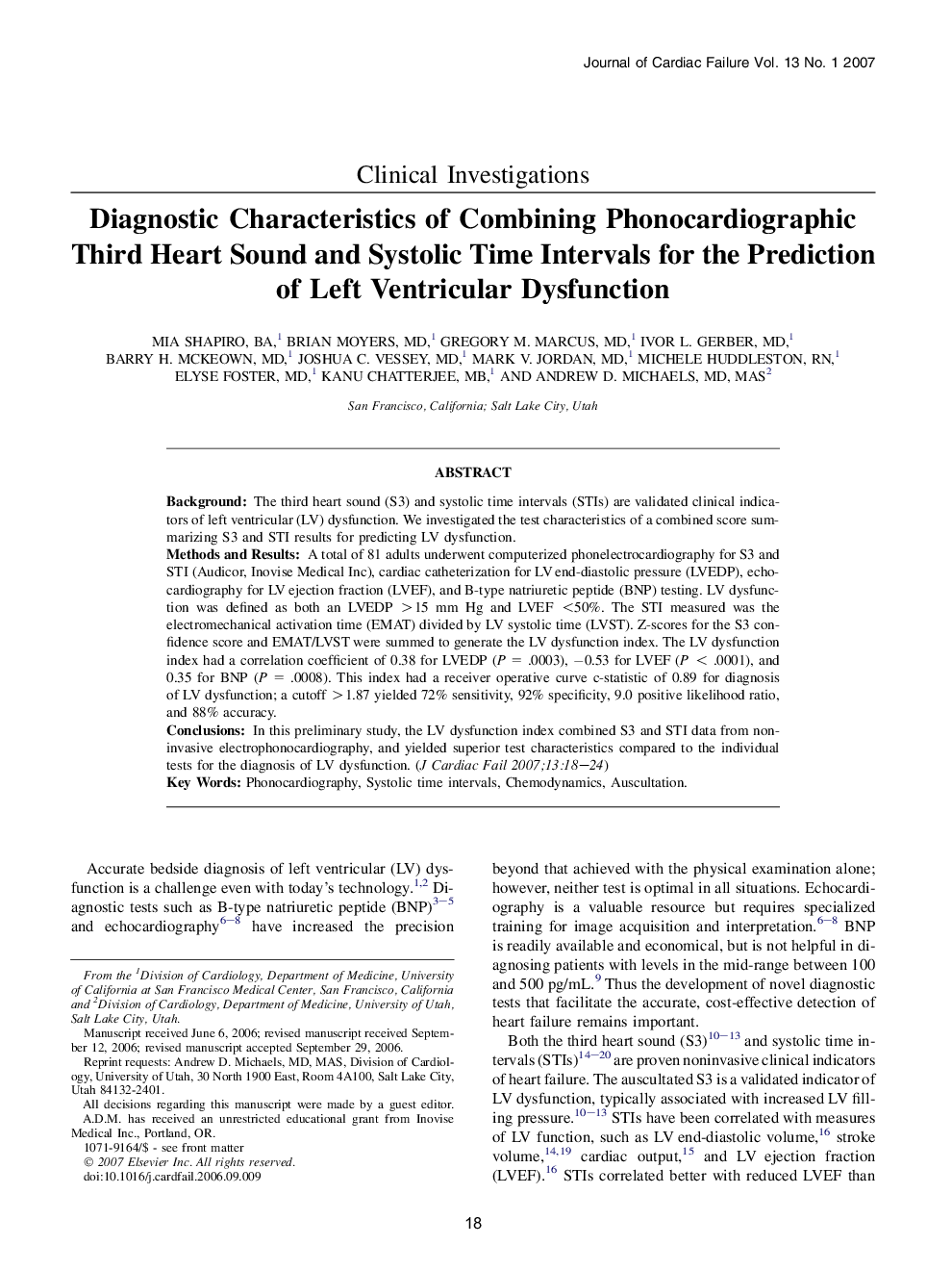| Article ID | Journal | Published Year | Pages | File Type |
|---|---|---|---|---|
| 2960423 | Journal of Cardiac Failure | 2007 | 7 Pages |
BackgroundThe third heart sound (S3) and systolic time intervals (STIs) are validated clinical indicators of left ventricular (LV) dysfunction. We investigated the test characteristics of a combined score summarizing S3 and STI results for predicting LV dysfunction.Methods and ResultsA total of 81 adults underwent computerized phonelectrocardiography for S3 and STI (Audicor, Inovise Medical Inc), cardiac catheterization for LV end-diastolic pressure (LVEDP), echocardiography for LV ejection fraction (LVEF), and B-type natriuretic peptide (BNP) testing. LV dysfunction was defined as both an LVEDP >15 mm Hg and LVEF <50%. The STI measured was the electromechanical activation time (EMAT) divided by LV systolic time (LVST). Z-scores for the S3 confidence score and EMAT/LVST were summed to generate the LV dysfunction index. The LV dysfunction index had a correlation coefficient of 0.38 for LVEDP (P = .0003), −0.53 for LVEF (P < .0001), and 0.35 for BNP (P = .0008). This index had a receiver operative curve c-statistic of 0.89 for diagnosis of LV dysfunction; a cutoff >1.87 yielded 72% sensitivity, 92% specificity, 9.0 positive likelihood ratio, and 88% accuracy.ConclusionsIn this preliminary study, the LV dysfunction index combined S3 and STI data from noninvasive electrophonocardiography, and yielded superior test characteristics compared to the individual tests for the diagnosis of LV dysfunction.
